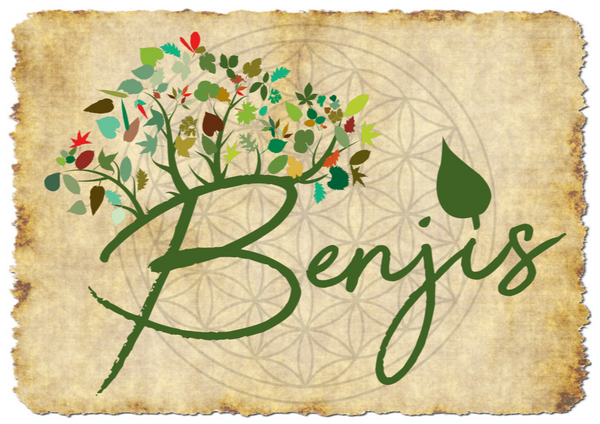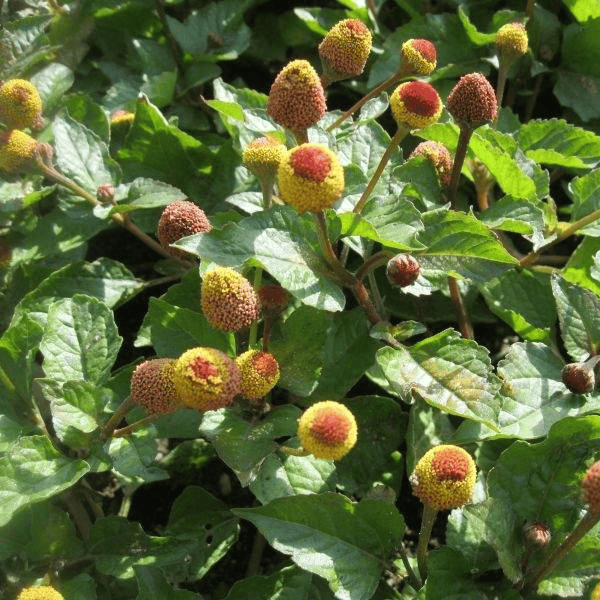Benjis seeds
Paracress - Jambú [Acmella oleracea]
Paracress - Jambú [Acmella oleracea]
Couldn't load pickup availability
Tips to reduce water requirements
Tips to reduce water requirements
We recommend mulching the beds
Experience has shown that by covering the ground, e.g. with Hay or straw, which can reduce evaporation by 80%. If you keep the beds evenly moist, an optimal moist microclimate will be created under the mulch. This not only promotes the growth of the plants, but also reduces water consumption enormously.
It is also recommended to always keep the beds moist , even if the bed is not used for a certain period of time
The drying out of the soil leads to a huge decline in the micro- and macro-organisms in the soil, which over time leads to an infertile soil . Tests have shown that the water content in the entire bed remains longer when the entire bed is watered over a longer period of time than when it is only watered selectively. Due to the small volume of the poured areas in contrast to the large dry volume, they dry out more quickly than if the entire volume of the bed is filled with moisture. Similar to heating in an apartment.
If the beds are not in use, we recommend sowing with green manure.
Maintaining an energy level always requires less energy than having to reach it again and again.
Paracress is an ancient perennial spice and medicinal plant that originates from Brazil and Peru. The versatile herb has numerous healing effects that include antibacterial, antiviral, immune-boosting, salivation-promoting and anesthetic effects, which is why it is used as a local anesthetic in dental treatments. It is used as a poultice for fungal infections and also to treat pain in rheumatism or gout. The plants grow in compact clumps and produce new flowers all year round if there is enough light. The leaves have a tingling effect and taste fresh with a mixture of sweet, sour and salt, making them ideal for salads. The dried leaves have a spicy and savory taste. It has been widely cultivated in South America since ancient times, in some regions of northern Brazil it is used as a spice, in the USA mainly as a salad and in India as a steamed vegetable. Flowers and leaves are edible, bee food plant.
General information
Plant family: Asteraceae
Life cycle: Perennial
Days to harvest: 100 days
Plant height approx.: 30 cm
Root type: Deep rooter
Nutrient requirements: Medium eater
Water requirements: Medium
Winter hardiness: Up to -4 °C
Location: Sunny
Soil: Permeable, loamy, sandy, humus
pH value: 5.5 to 7
Sowing and planting information
Germ type: Light germinator
Sowing depth: 0 cm
Optimal germination temperature: 18-22 °C
Germination time: 8-14 days
Plant and row spacing: 30x40 cm
Optimal mixed culture:
Unfavorable mixed culture:
Subtropic climate (Mediterranean) (e. g. B. Portugal, Spain, Italy)
We recommend pre-cultivation in small pots from February to December.
Moderate climate (e. g. B. Germany, Switzerland, Poland)
We recommend pre-cultivation in small pots from March to June.
General
When pre-cultivating, sow the seeds in small pots and let the seedlings grow to the first visible paracress leaves. Then plant the pregrown plants from the pots directly into the open field. The seedlings are planted in the bed from the 2nd pair of leaves after the cotyledons.
Paracress prefers a sunny location with a very permeable, nutrient-rich, humus-rich and sandy loam soil. Prepare the soil with seasoned animal manure. Avoid waterlogging and drying out.
Additional tips
Because paracress is only partially frost-hardy, a sheltered location with winter protection is recommended when kept outdoors in a temperate climate. When grown in pots, the plant is overwintered at temperatures between 5 and 15°C, ideally in a winter garden. In order to quickly obtain a fine, crumbly and permeable soil, we recommend additional incorporation of biochar and primary rock powder.
Type of propagation
It spreads via seeds or cuttings.
Plant care
Regular watering results in stable and faster growth. Beds prepared with animal manure and planting in mixed culture replace additional fertilizer.
Germination ability of seeds: 2-3 years
Other Names
Botanical names: Acmella oleracea, Spilanthes Acmella
English names: Toothache plant, Szechuan buttons, Paracress, Jambú, Buzz buttons, Tingflowers, Electric daisy, Spilanthes
German names: Parakresse, Jambú, Zahnwehpflanze, Prickelblume, Husarenköpfchen, Elektrisches Gänseblümchen
Portuguese names: Jambu, Flor eléctrica
Spanish names: Flor eléctrica
French names: Brède mafane, Cresson de Parà
- Made in harmony with nature
- All seeds and seedlings are genetically stable for further propagation
- Our seeds are always checked for germination at regular intervals
Shipping and pick-up information
Shipping and pick-up information
Shipping
We offer CTT shipping for Saagut Europe and USA far! With us you will always receive a tracking number to track your package. Shipping costs differ depending on the shipping region. Here is a list of regions and prices:
National Shipping
Portugal (with the Azores and Madeira Islands)
Envelope or package up to 500g = € 3.50
2 kg Bus Package = 8 €
Package over 2 kg = 16 €
Europe Shipping
Envelope up to 100g = 7 €
500g Bus Package = 9,50 €
1kg Bus Package = 14 €
2kg Bus Package = 20 €
Package over 2kg = 40 €
USA Shipping
Envelope up to 100g = € 7.50
500g Bus Package = 15,50 €
1 kg Bus Package = 24 €
2 kg Bus Package = 33,50 €
Package over 2 kg = 67 €
After you have completed your order with payment, you will receive a shipping confirmation email with your tracking number.
Abholung
You can pick up your order at any time from 12 noon to 8 pm or by appointment with us on site or at the markets we visit.
Simply enter the desired market to pick up in the comment box in the shopping cart.
You can find the markets in the menu on our website or at this link: https://www.benjis.net/pages/market-dates
Share
![Paracress - Jambú [Acmella oleracea]](http://www.benjis.net/cdn/shop/files/Parakresse-Jambu-Jambu-Florelectrica-Acmellaoleracea-www.benjis.net.png?v=1713192041&width=1445)





